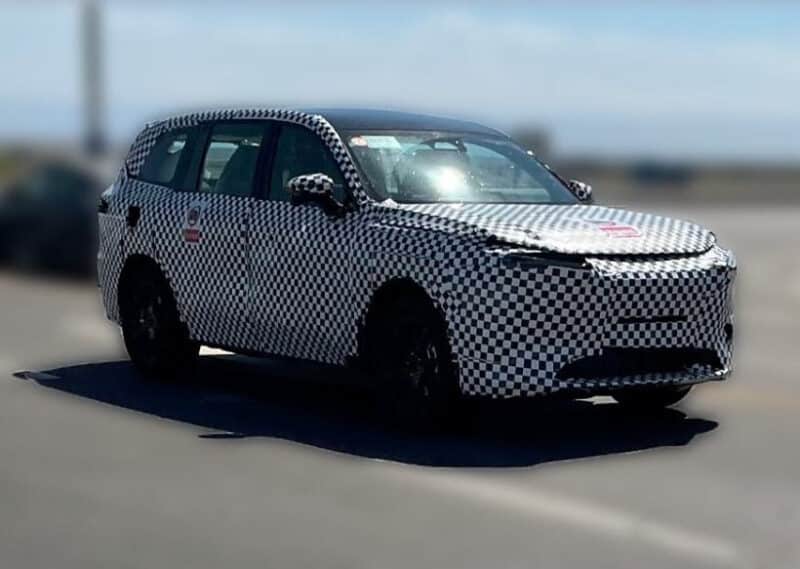The fourth model from the Aito brand has recently been spied testing. Known as the M8, the new SUV will fill the model gap between the current M7 and M9 cars. Previous information has suggested that the M8 is largely a five-seat version of the M9.
From the spy shots, we can certainly see that the M8’s styling and silhouette are similar to those of the current M9. The car appears to have largely straight lines; however, the window line appears to kick up after the C-pillar. This may, though, simply be a case of camouflaging to confuse us.
Unlike on the M9 there is no roof-mounted Lidar unit. This could mean one of several things. Firstly, the car pictured could just be a lower spec version, which does not come with Lidar, but this seems somewhat unlikely given that the M9 has Lidar as standard across the range. Another possibility is that the car uses a purely vision-based system for its smart driving capability. Huawei’s latest ADS system is known as Qiankun 3.0, and the SE version of this is a purely vision-based system. It is, however, aimed at cheaper cars such as the Deepal S07 and so would not be used on a car such as the M8. The system can only support driving assistance on highways and urban expressways along with ramp access and exits. This may mean that Huawei is shifting to a high-end vision-based system. It should be noted that Xpeng, with its XNGP system, will in future no longer need to use Lidar, and the forthcoming Xpeng P7+, which is equipped with the system, does not have Lidar.
Interior spy shots of the M8 show that it will have a very similar interior to that of the M9 and uses a triple screen design.

The M8 will likely come in all-electric, and EREV versions and the powertrain should be broadly in line with that of the M9. In the case of the EREV version of the M9 (see specs), it uses a 1.5T engine with a maximum power of 112 kW as a range extender. Actual power to the wheels comes from a front-mounted 165 kW electric motor and a 200 kW unit on the rear. Combined peak torque of the system is 675 Nm. For the BEV there’s a 160 kW electric motor on the front and a more powerful 230 kW motor at the rear. Surprisingly, torque is slightly lower on the BEV version, with a total of 673 Nm. The EREV has a 42 kWh battery pack and has an all-electric range of 190 km, while the BEV uses a 100 kWh battery pack and has a 630 km range, both measured using the CLTC system.
Aito is a brand developed between Huawei and Seres using the HIMA (Harmony Intelligent Mobility Alliance) ecosystem cooperation model. Under this, Huawei not only provides an intelligent cockpit and intelligent driving solution but is also involved with elements including the design, production, sales, after-sales, and other vehicle stages but stops short of producing the car.

Earlier this year, Seres began using a 10,000-ton class super diecasting unit to produce the rear body units of the Aito M9. This reduced the number of parts by nearly 80 and the number of solder joints by around 1440. It’s reported that this manufacturing technique will also be used with the M8.
Aito has a sales target of 600,000 cars for 2024. It’s believed that the M8 model will launch in the coming months, and the plans call for this to form part of the total sales.
Source: Fast Technology



